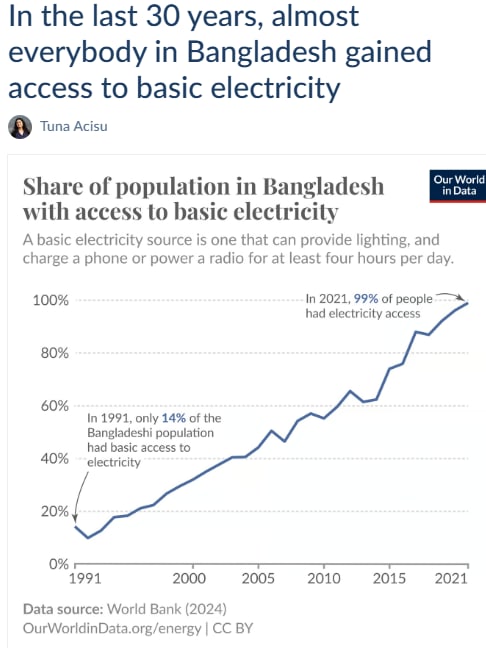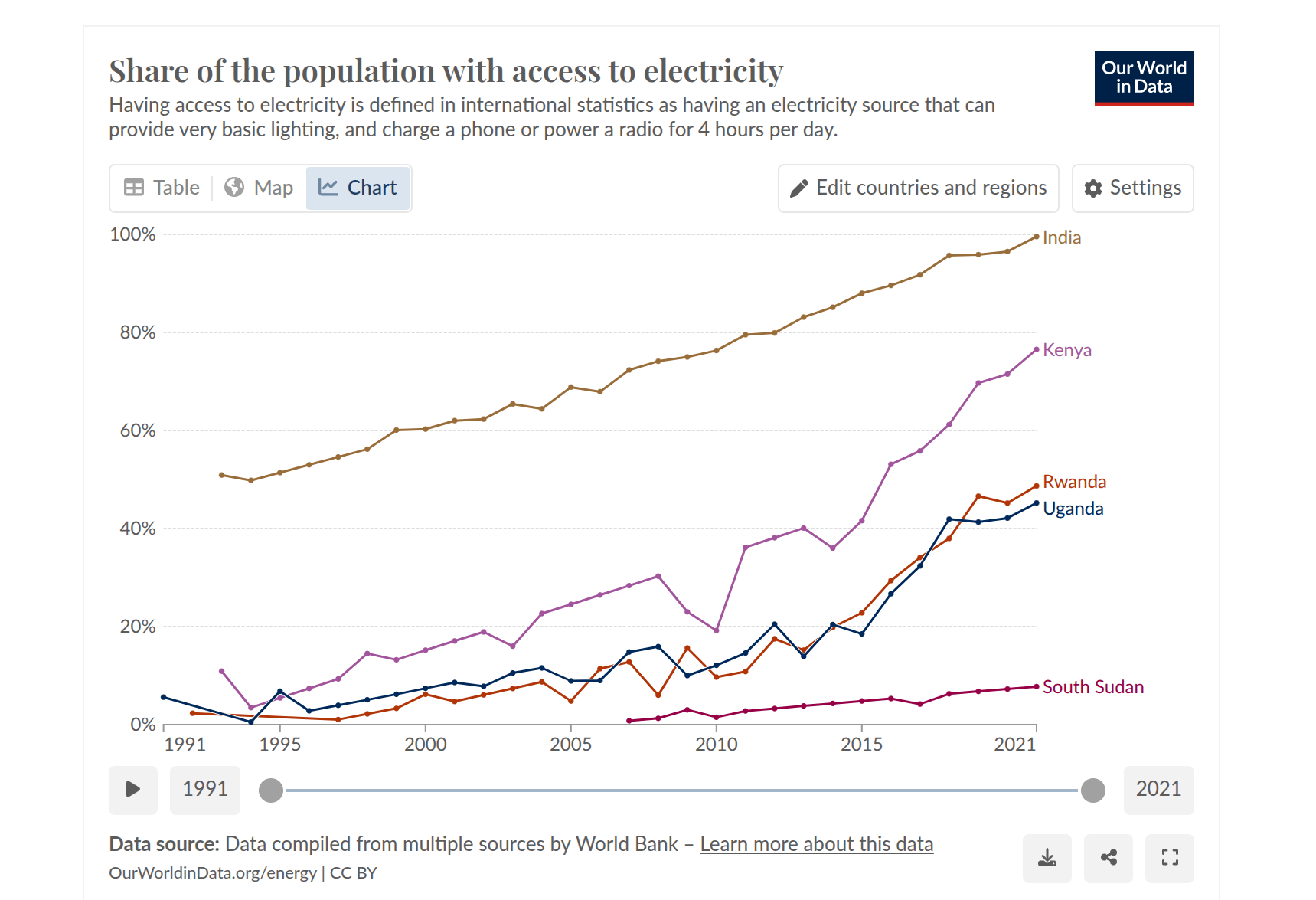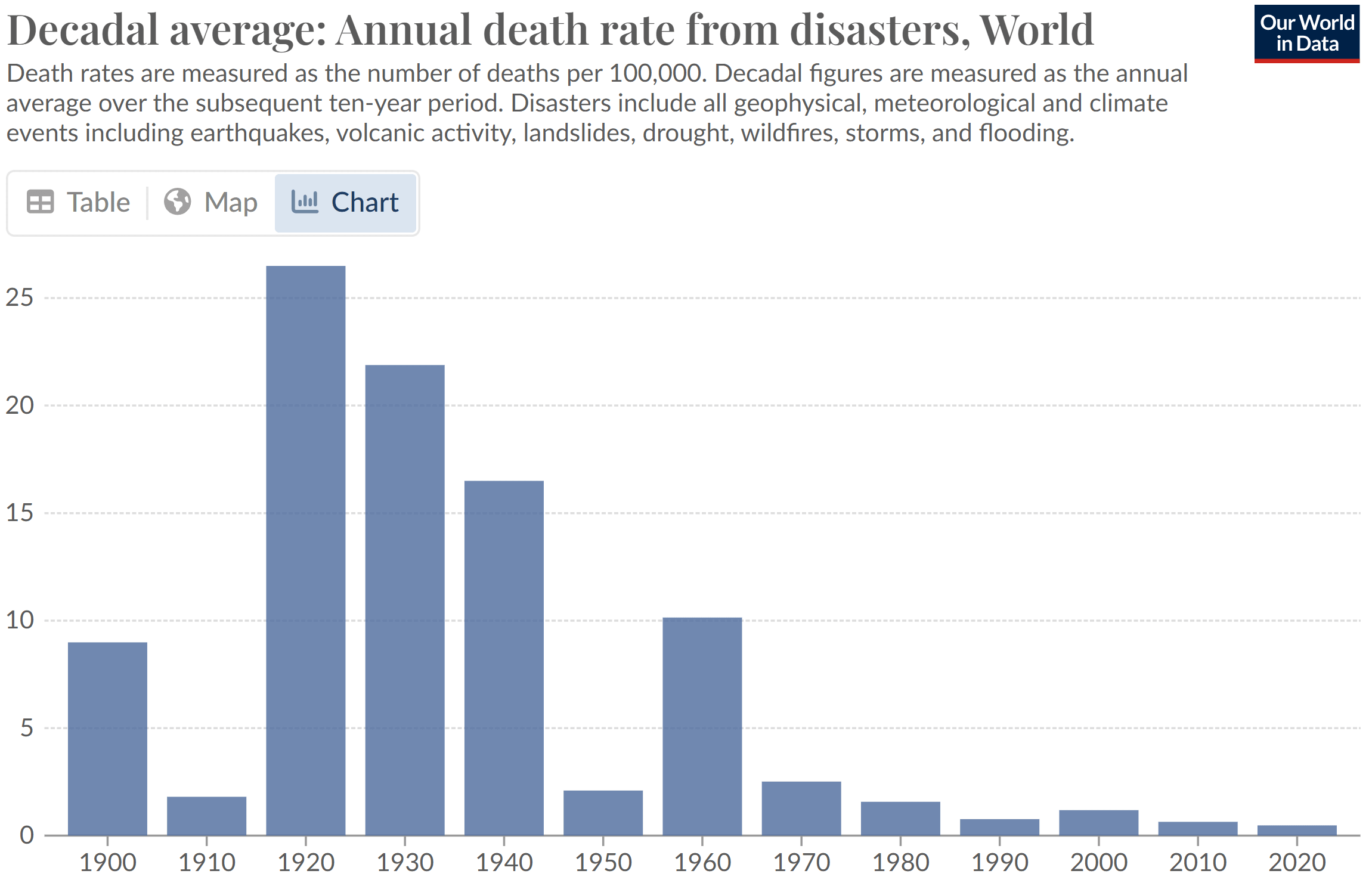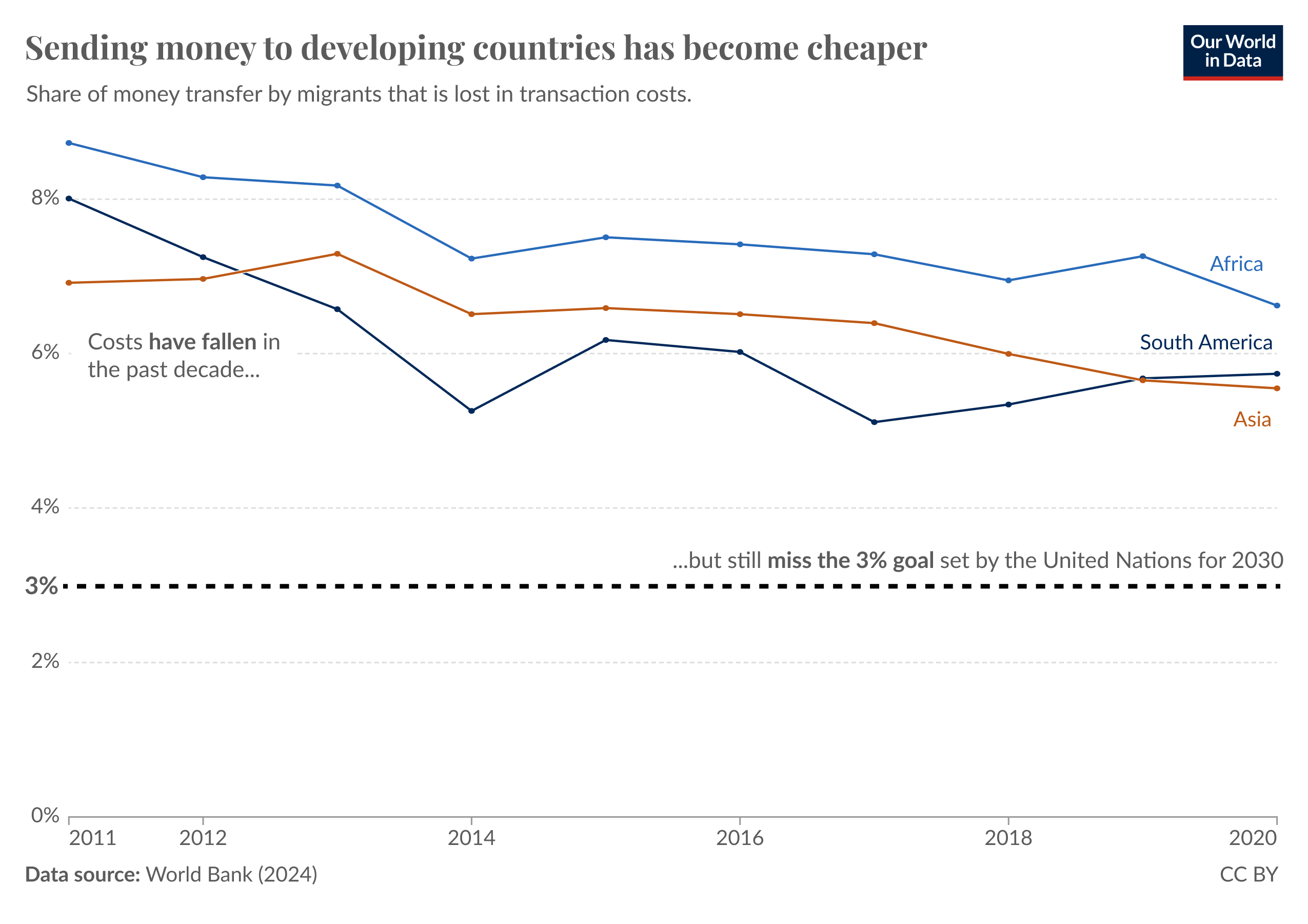Comments from the banner on the frontpage will also be posted below, but you should also feel free to post here any time. You'll only see your comment on the banner if you add it by clicking on the banner- comments added directly to this post will only appear here. The banner will be up all week.
This thread is for discussing ways the world is getting better. You can interpret this however you like, but if you'd like some pointers: last time we had some Our World In Data-sourced "mortality rates in under 5s have fallen by X%" facts, some recent announcements from the news, and much more. I’d also love to see examples of ways the EA community is making the world better. To anyone that needs to hear it — it’s not bragging, it’s sharing useful and motivating information.
Last time we ran this banner, there wasn’t a discussion thread. This meant there was no room for caveats or pushback (horror!). This time, I’d love to see discussions springing out of the comments people make on the banner. However, be aware that these comments will be about things that people find motivating/ exciting, so consider that when you are adding context/ pushing back.







OWID says that ~45% of the population in Uganda has access to electricity, and that it more than doubled in the past 10 years. Does this match your experience?